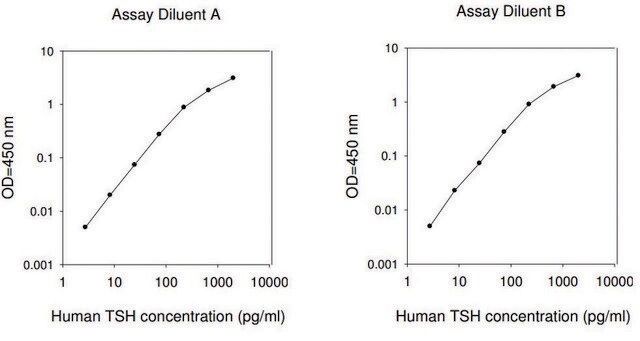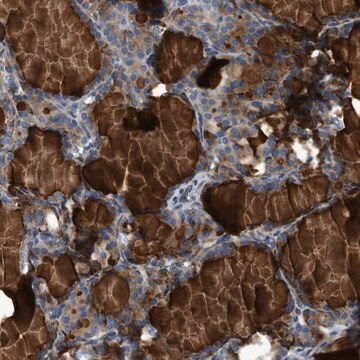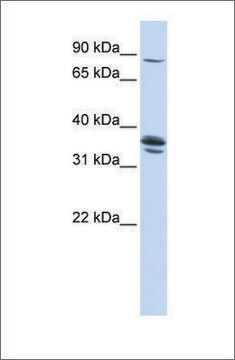GLP1A-35HK
Glucagon Like Peptide-1 (Active) RIA
About This Item
Prodotti consigliati
Grado
for protein analysis
Livello qualitativo
Descrizione
ED<sub>80</sub> = 28 ± 7 pM ED<sub>50</sub> = 82 ± 10 pM ED <sub>20</sub> = 241 ± 24 pM
analytes available: Glucagon Like Peptide-1
10-500 pg/mL (standard curve range)
Caratteristiche
accuracy 101% serum sample concentration 1:500 dilution–100 ng/mL standard
accuracy 40.7 ± 2.9%
Reattività contro le specie
rat, human, mouse
tecniche
radioimmunoassay: suitable
N° accesso UniProt
Metodo di rivelazione
radioactive
Descrizione generale
SIZE: 180 amino acids; 20909 Da
SUBCELLULAR LOCATION: Secreted.
TISSUE SPECIFICITY: Glucagon is secreted in the A cells of the islets of Langerhans. GLP-1, GLP-2, oxyntomodulin and glicentin are secreted from enteroendocrine cells throughout the gastrointestinal tract. GLP1 and GLP2 are also secreted in selected neurons in the brain.
PTM: Proglucagon is post-translationally processed in a tissue- specific manner in pancreatic A cells and intestinal L cells. In pancreatic A cells, the major bioactive hormone is glucagon cleaved by PCSK2/PC2. In the intestinal L cells PCSK1/PC1 liberates GLP-1, GLP-2, glicentin and oxyntomodulin. GLP-1 is further N-terminally truncated by post-translational processing in the intestinal L cells resulting in GLP-1(7-37) GLP-1-(7-36)amide. The C-terminal amidation is neither important for the metabolism of GLP-1 nor for its effects on the endocrine pancreas.
SIMILARITY: SwissProt: P01275 ## Belongs to the glucagon family.
MISCELLANEOUS: In the glucagon antagonist, His-53 and Phe-58 are missing. This antagonist has been successfully utilized to reduce glucose concentration in vivo."
Applicazioni
Esclusione di responsabilità
Avvertenze
Danger
Indicazioni di pericolo
Consigli di prudenza
Classi di pericolo
Acute Tox. 3 Dermal - Acute Tox. 4 Inhalation - Acute Tox. 4 Oral - Aquatic Chronic 2
Codice della classe di stoccaggio
6.1C - Combustible acute toxic Cat.3 / toxic compounds or compounds which causing chronic effects
Certificati d'analisi (COA)
Cerca il Certificati d'analisi (COA) digitando il numero di lotto/batch corrispondente. I numeri di lotto o di batch sono stampati sull'etichetta dei prodotti dopo la parola ‘Lotto’ o ‘Batch’.
Possiedi già questo prodotto?
I documenti relativi ai prodotti acquistati recentemente sono disponibili nell’Archivio dei documenti.
Il team dei nostri ricercatori vanta grande esperienza in tutte le aree della ricerca quali Life Science, scienza dei materiali, sintesi chimica, cromatografia, discipline analitiche, ecc..
Contatta l'Assistenza Tecnica.










